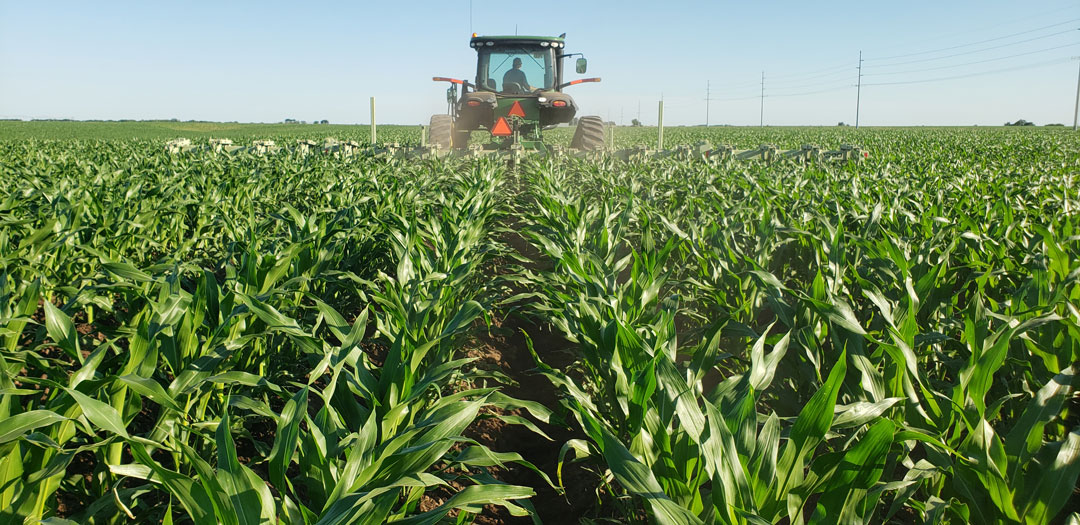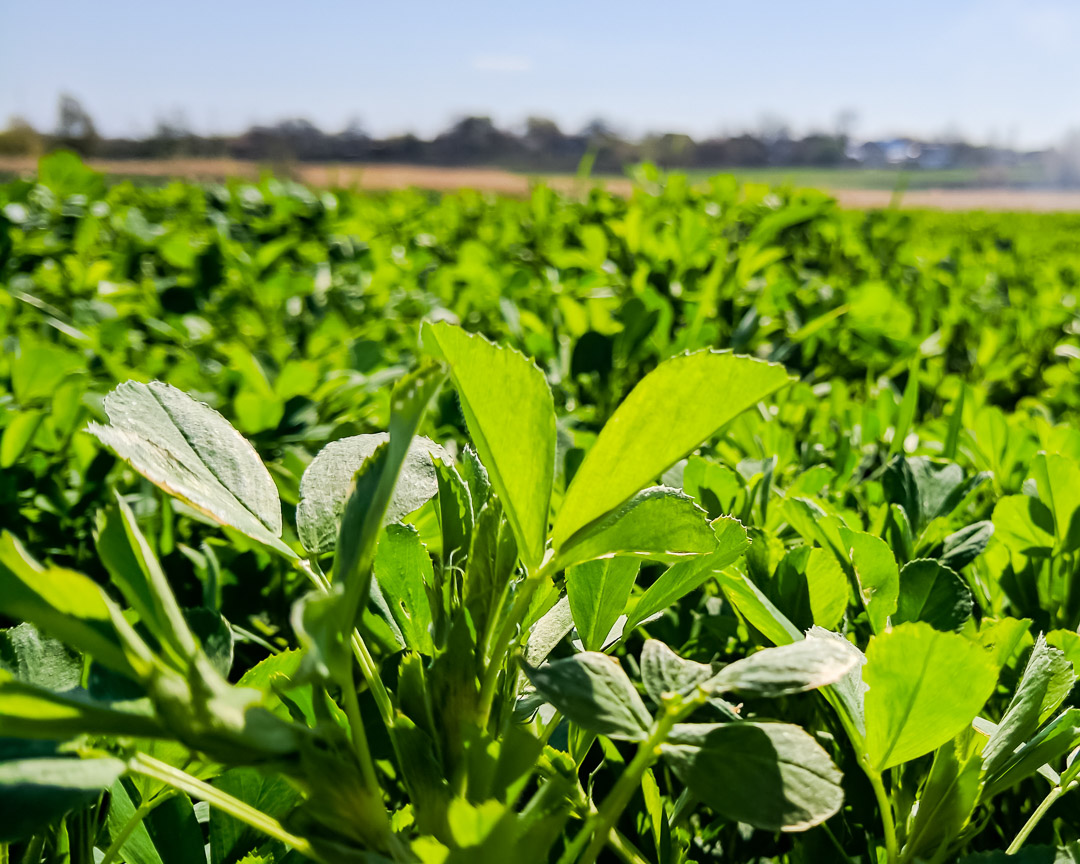- Published On: January 12, 2021
- Author: AgriSecure
Zero tillage. Continuous cover. Rotational grazing. Several farming practices are regenerative in nature. But when it comes to the economics of sustainable success in agriculture, organics remains one of the strongest.
Premiums for organic corn and soybeans have more than doubled their conventional counterparts’ prices over the last decade. This is hanks to high consumer demand. When combined with the right production practices, the organic supply chain can be environmentally and economically sustainable. And to be sustainable with one you often need to be sustainable with the other.
Sustainable success requires a long-term outlook
The key to achieving that sustainability is a long-term mindset. It goes from input suppliers to the organic farmers to the end-users, says AgriSecure CEO and founder Steve Sinkula. And it’s only when the industry works together that everyone finds that sustainable success.
Sinkula says one of the main obstacles organic farmers face is making decisions that will benefit them in the long-run. But the key is making these decisions in a way that doesn’t financially hurt them in the present.
For instance, one of the critical components of a successful organic operation is a diverse crop rotation. The right rotation helps prevent pests and manage weeds, which is crucial for a farming system that doesn’t use chemicals. It also promotes healthier soils since different crops take and provide various nutrients, thereby balancing soil biology.
Because of the vital role of crop rotation, Sinkula says organic farmers should plan at least five years out. Ideally, the plan would go 10 years out. This sets up their fields and their pocketbooks for long-term success.
“You can’t be too focused on immediate economic benefits,” Sinkula explains. “It leads to decisions that are detrimental or not regenerative in nature in the long-term for your farm. Ultimately, that will catch up with you from an economic perspective as well.”
Market options and crop rotations
One of the key challenges farmers face in diversifying their organic crop rotation is market opportunities. It doesn’t matter how well a certain crop fits a rotation if there’s no buyers willing to pay a fair price for the grain. In those cases, there’s no economic upside and no sustainable success stories.
That’s where end-users can come in to support organic farmers with demand for new crops.
“It seems to us there are these chicken and egg opportunities. End-users may not be able to integrate certain ingredients in their products because there isn’t a supply that’s being organically produced,” Sinkula says. “And farmers aren’t growing it because there’s no demand.”
Therefore, end-users need to be thinking long-term about the products consumers will want. They need to create the demand for farmers to fill.
“Understanding how to coordinate in a fragmented landscape is so important. It benefits consumers who want those products and the manufacturing companies that create them to meet consumer demand,” Sinkula adds. “And that can help growers to have a more robust crop rotation.”
When there is a lack of crop diversity, the consequences are often economically and environmentally detrimental. For example, consider a weed infestation from a poor crop rotation. It can take years to solve, require additional tillage, and will likely hurt future yields. But growers often end up trading off long-term benefits for their short-term needs, Sinkula says. And the needs for the farmer are often just surviving from year-to-year.
Critical data is needed to ensure sustainable success
That long-term mindset also applies higher up in the supply chain.
There are many organic inputs available on the market, such as biologicals, biostimulants, and microbials. But farmers lack the depth of insight and data to make the right decisions on which ones to use. They’re also time-crunched and simply don’t have the resources to do their own research into the different products available. This often leads to “choice paralysis,” Sinkula says.
“Conventional has a lot of information and research,” says Bryce Irlbeck, a fifth-generation organic farmer and AgriSecure founder. “It’s pretty much on every aspect of agriculture. That just doesn’t exist in organic. And it makes it very difficult to make decisions in the organic space, which decreases efficiency.”
To support the sustainable success of organic farmers and the industry as a whole, manufacturers of organically approved inputs need to take the initiative of doing that research, particularly at the field-level, and making the data available to the farmers. They also need to make sure the data applies to organic row crop farmers. This is especially true when it comes to ROI. The economics are very different from organic farmers growing high-value crops like fruits and vegetables.
The same applies to equipment manufacturers. There’s an opportunity to provide organic farmers with autonomous or robotic equipment that can help with the labor aspect, Sinkula says. However, manufacturers need to understand the constraints organic farmers face. They should ask how they can meet their needs with new equipment innovations.
It’s taking the time to build up their knowledge on organic row crop farming and their research dataset. That way companies can deliver the value proposition that organic farmers need, Sinkula says. And in return, they’ll capture the reward of delivering that value to them.
Clarity and transparency in the organic marketplace
Organic growers also need more clarity with the organic marketplace, which Irlbeck says is particularly lacking in transparency.
Mercaris is one company doing that at the macrolevel. Irlbeck and Sinkula both feel it’s been valuable to the organic industry. But more transparency is needed.
“End-users say they want to support farmers, they say they want to do the right thing environmentally,” Sinkula says. “But there’s pressure on end-users to maintain or increase their business margins, so often they seek the lowest cost provider. For the farmer, it once again becomes an issue of tradeoffs.”
Pushing down crop prices only creates a race to the bottom, Irlbeck adds. We’ve already seen play out in conventional farming.
“It has the potential to drive the environmental sustainability out of organics,” he explains. “That’s not the intention of organics. That’s not what people are paying premiums for. They’re paying a premium because they feel things are being done right.”
Partnerships at the farm level are key
There are many ways to support organic farmers — and ultimately the entire organic supply chain. Companies and end-users need to find ways to work with them. The problem is the landscape is fragmented and geographically dispersed, which means there’s a high coordination cost.
That’s where developing the right partnerships is important. University ag extensions, non-profits, associations, and companies like AgriSecure can all play key roles in connecting the two ends of the value chain.
“In between those two ends of the value chain is a way to have a dataset. It’d be like we have in conventional, where farmers can use that information to really help decision-making,” Sinkula says. He adds that everything starts at the farm level. “There’s a lot of ways the other participants in the supply chain need to think and act long-term. And if they’re not doing that, it pushes the farms back to having a short-term mindset. And that’s where the year-to-year tradeoffs come into play.”
When the entire industry works together, we can support organic farmers and sustainable success across the supply chain. We need systems and data that enable farmers to make the best decisions for their operation. In that scenario, everyone can achieve the level of economic and environmental sustainability necessary to keep organics strong for the long-term.
AgriSecure can help
Farmers looking to transition to organic, or to increase their organic acres, can find a partner in AgriSecure. Call us today.
This article was first published by New Ag International.
Related Articles
-
Autonomous Farm Equipment Solves Organic Labor and Time Challenges
Ask an organic farmer about their biggest challenges and labor and time crunches are likely to be at the top. But autonomous farm equipment may soon be an option to help solve those issues. And help growers be more efficient in their operations, too. That’s what Craig Rupp, founder and CEO of Sabanto, has seen […]
-
Cover Crops Bring Big Benefits to Organic Farms
We always stress the importance of a diverse crop rotation to achieve long-term organic success. But what if market opportunities for organic crops in your area are limited? How can you diversify your rotation with just a few cash crops? Answer: Cover crops. Even though you don’t sell them like cash crops, they can still […]
-
Know Your Numbers to Push Crop Profitability
Yield is often the top priority in farming. The truth, though, is that the highest yields will not necessarily result in the highest ROI. And this is especially the case for organic production. We know good execution results in the best yields, but the best way to maximize your crop profitability is to know your […]
-
Organic Crop Plans: Don’t Farm Without Them
Don’t make the one mistake common to all failed organic operations.That is, farming without a detailed and pressure tested crop plan. Let’s be honest. It wasn’t so long ago that organic corn was selling for $12/bushel. Even if farmers made bad decisions, high prices hid their errors and oversights. Markets change, though, and we can […]
-
6 Ways to Protect Organic Profits in Uncertain Times
Economic uncertainty hits all sectors of the agriculture industry, including organics. The good news? It’s possible to safeguard your organic profits. For a start, it’s even more important for organic farmers to focus on executing their operations really well. The better the execution, the better you can weather the market conditions and remain profitable. Here […]
Get in the know
Our newsletter, it’s a quick read. You’ll get industry news plus all the latest organic insights. Who doesn’t want that?






